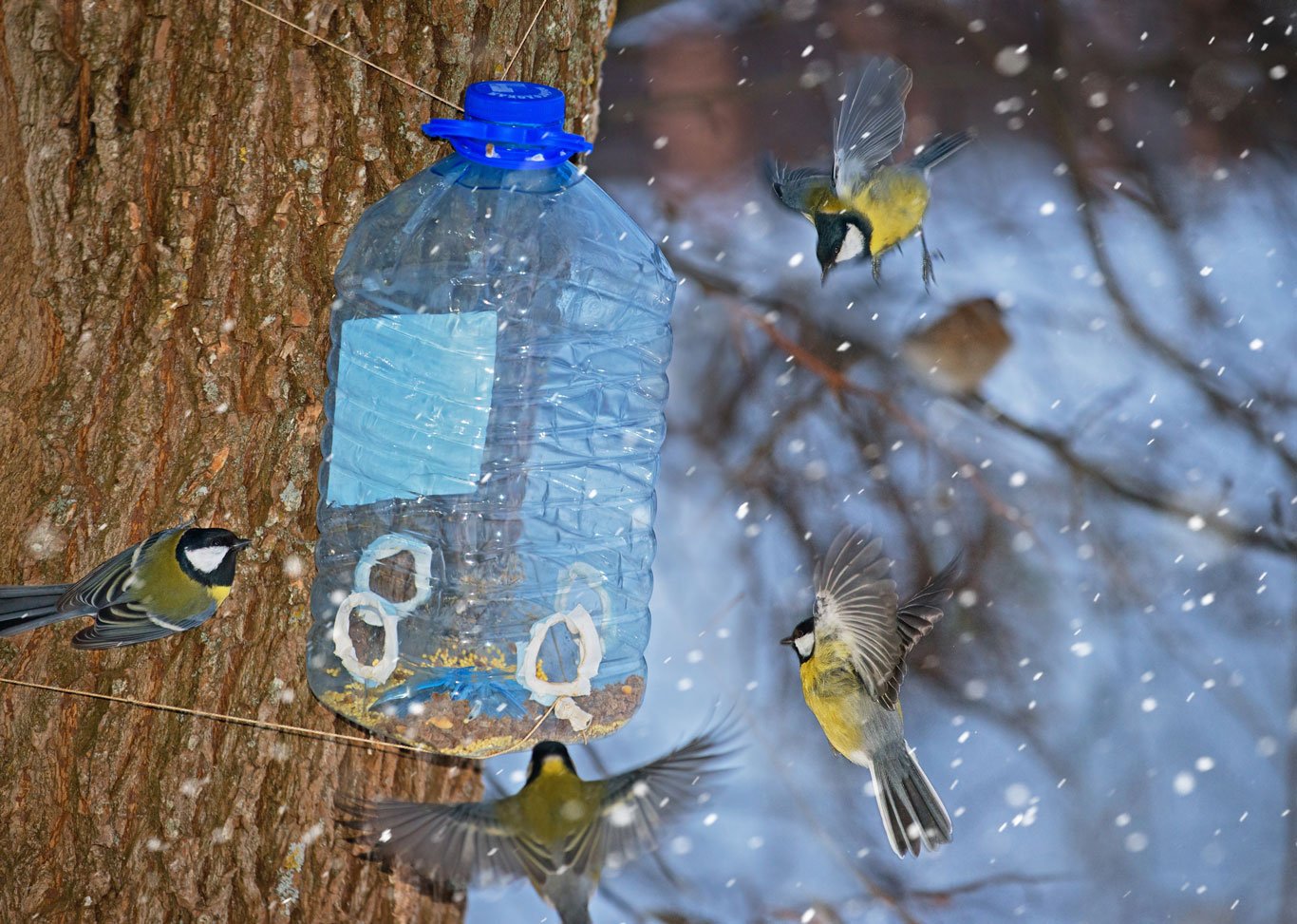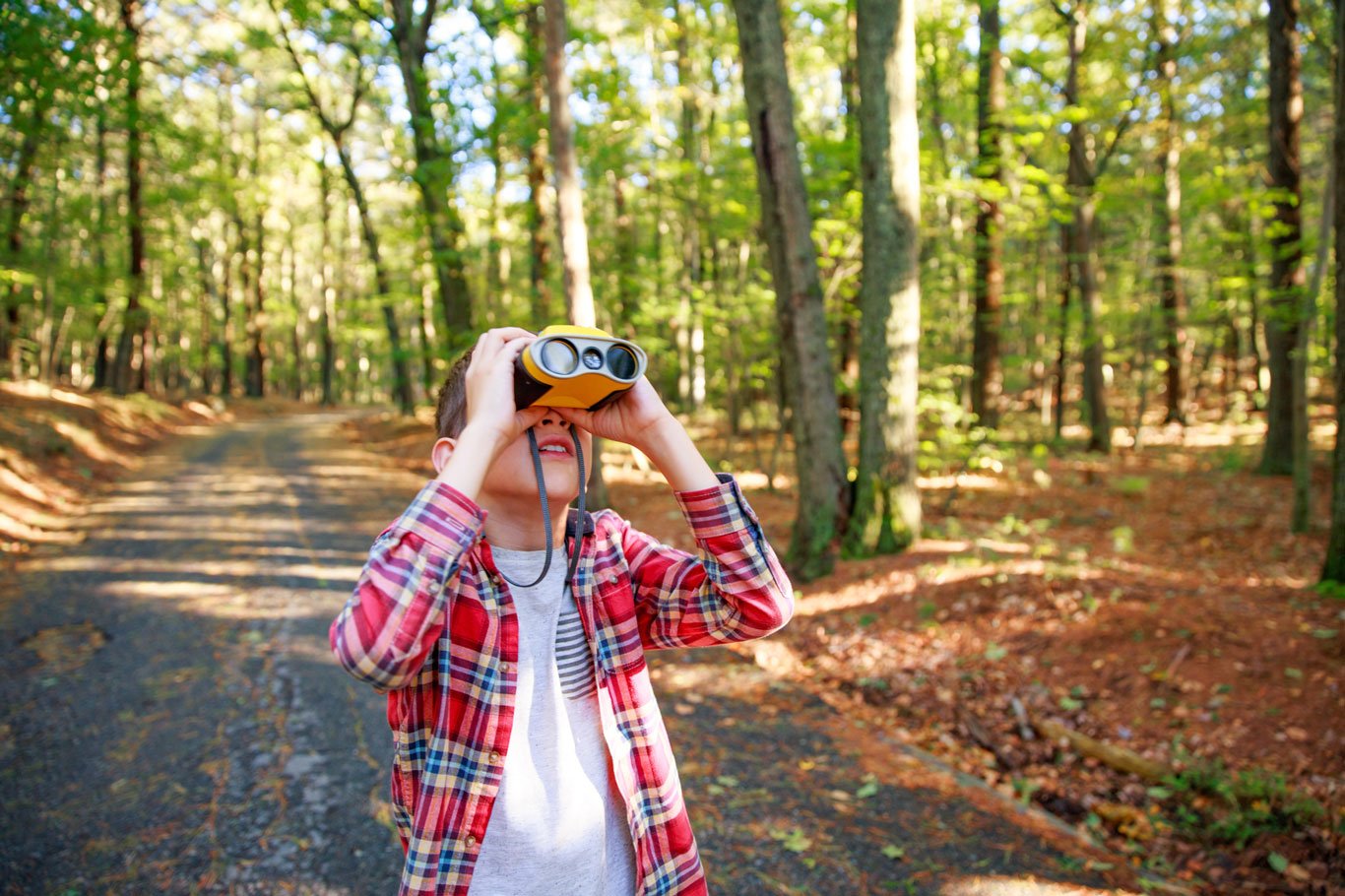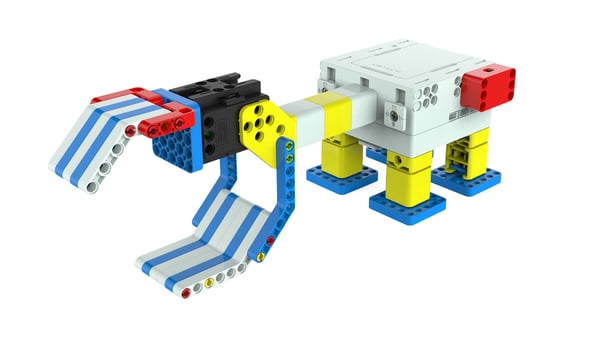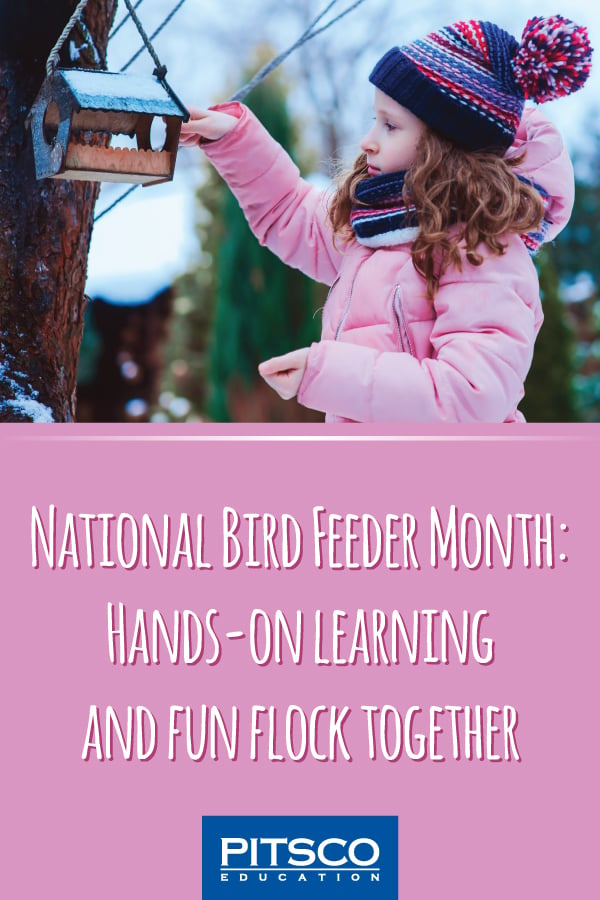During a recent visit to a school in McQueeny, Texas, I noticed bird feeders in the courtyard and attached to classroom windows. This prompted me to reflect back to childhood, on the time I spent watching birds from my parents’ deck and my grandparents’ backyard. I could spend hours watching the birds flitting and fleeting between the feeders and their perches in the trees; watching them brought me such joy.
So, with February being National Bird Feeder Month, I started thinking about the learning opportunities and the joy bird-watching could bring to the classroom.
Bring the Outdoors Inside: DIY Feeders and Feed
You could start with a STEM project to design bird feeders from recycled materials. Students can go through the engineering design process to create the bird feeders. See STEM Cobb for resources to design a bird feeder. Or do a quick search and you’ll find many DIY feeder ideas, including this one from the Audubon Society.

You can create your own bird feed in the form of suet. Suet is especially nice for birds in winter because it contains a lot of extra fat in the form of lard. My mom makes her own suet each winter and agreed to share her recipe with the Pitsco blog family.
Suet Recipe
- 1 cup lard
- 1 cup peanut butter
- 1 cup cornmeal
- 3 cups oats
- 1 cup sugar
- Nuts, seeds, fruits (optional)
Melt the peanut butter and lard then add to the other ingredients and mix. Put into a loaf pan. Refrigerate and then slice and put in suet holder. Any extra suet can be frozen. Put waxed paper between the slices.
When your feeders are created or your suet is hung, you can start trying to identify birds. It’s a great opportunity to teach students about types of birds or how to identify a bird by its song like this kindergarten teacher did. Using a mnemonic device, hearing the sound, “who cooks for you, who cooks for you all,” has helped me identify a barred owl living in my neighborhood.

In North America, you can even join FeederWatch though the Cornell Lab of Ornithology and Birds Canada. The organization enlists volunteers to track the distribution of birds in North America during the winter months. When you join FeederWatch, you get a starting kit to help you track the birds and report your data back to the scientists. Students can learn about bird migration or biology or ornithology careers. How cool is the idea of joining bird-watchers across the continent to provide data to professionals?
Robotics and Ravens
You can even extend this bird-watching and feeding into robotics. The UKIT Beginner kit for Grade 4 has a free curriculum resource in which students build a robot to save red-shouldered hawks. Students start the unit by learning the anatomy of hawks, their habitat, and their life cycle. Students put these observations into practice by building a Grabber Robot and modifying it to address challenge questions.

In preparing for this blog, inspiration struck. I made and hung gelatin bird seed ornaments and then filled and hung a bird feeder that had sat empty in my storage shed for years. I even found the time to watch the birds fly into the trees surrounding my houses and try to identify them. Each correct identification sparked more excitement and curiosity. I hope you take the time to feed the birds in February and share in the excitement!
Resources:
“How I Taught My Kindergarten Kids to ID Hundreds of Birds”
“What Is FeederWatch”
“2 Fun Bird Feeder Crafts for Kids to Make in the Winter”
“Birding STEM Challenge”
“23 DIY Birdfeeders That Will Fill Your Garden With Birds”
“Mnemonic Bird Songs”








